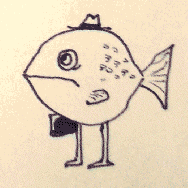How do mermaids do drugs?
Mermaids are pretty laid back, it's clear that they're not into speed or anything; but the question isn't what drugs they do, it's how they do them. Regardless of your moral-ethical stance on drugs (it's ethical for mermaids, you'll see), it's a fact of mermaid society – they don't really have any responsibilities other than to harass sailors (it turns out that's actually their job, like Sirens and Harpies), so mermaids have a lot of free time.
Mermaids can't always go up to bask on rocks and smoke marijuana, because mermaid kings are always issuing jealous and frustrated edicts prohibiting mermaid presence on basking rocks. While generally ignored, there are still plenty of mermaids that don't want to provoke the wrath of the deprived merking. Even if they're not harassing sailors, which is all merkings really want to do, they might get a trident in the eye.
So right, so mermaids need drug alternatives. We can deduce without scientific study that they have a different metabolism than we do. To start, if they live above and below water then clearly their cardiovascular system is amphibious and they don't process oxygen the way we do (take also into account deep-sea mermaids, who exist in oxygen poor environments and must be even more dissimilar to us). Mermaids also need to regulate salinity in their system very differently, since they live in salt water. This makes me wonder how they get their iodine, since they never salt anything. But I digress – we see references in the anatomical writings of Ibn al-Nafis and Mansur ibn Ilyas:
Adaptations both cardiovascular and pertaining to the homeostatic regulation of salinity in the mermaid body indicate that the merorganism behaves differently from that of Homo sapiens with regards to chemical substances.There are mermaid texts, furthermore, outlining these differences, as seen here in a 15th century work translated by ibn Ilyas. It is evident from the picture that mermaids fail to understand the inner workings of the human body, as they've chosen to depict it full of seaweed.
Now, I'm not going to venture a guess as to whether mermaid bodies are full of seaweed or not (not unlikely though; I mean, if they're made of foam, why not?), but the evidence seems to indicate, irrefutably, that mermaids get high by provoking poisonous fish to sting them.
Much in the same way that human beings sometimes enjoy exposing themselves to the capsaicin in hot peppers, mermaids have grown fond of fish poisons. Stonefish, Blowfish, Lionfish, all are examples of popular intoxicant fishes. Because mermaid bodies metabolize other stuff differently, fish poisons don't kill them the way they kill us.*
Really it's just practice – if they're confined to the watery deep by merking decree, mermaids have to provoke something other than sailors. It's in their nature, they can't help it. So they're not drug addicts or anything; the behavior leading to drug use in mermaids is habitual, not the use of drugs itself.
Mer ministers, viziers, and PETA types object to fish harassment, and this is promoted by ruthless merkings that seek naught but the frustration of their people, that they suffer as their king. Wiser, more forgiving merkings keep fish-harassing restrictions to a minimum, because if mermaids can't harass anything they write petitions to the king and that's annoying. All merkings generally promote the harassment of mermaids by fish-headed mermaids.

* Wikipedia: The large amount needed to kill an adult human and the low concentration of capsaicin in chilies make the risk of accidental poisoning by chili consumption negligible.
same article: Tarantula venom activates the same pathway of pain as is activated by capsaicin.

No comments:
Post a Comment